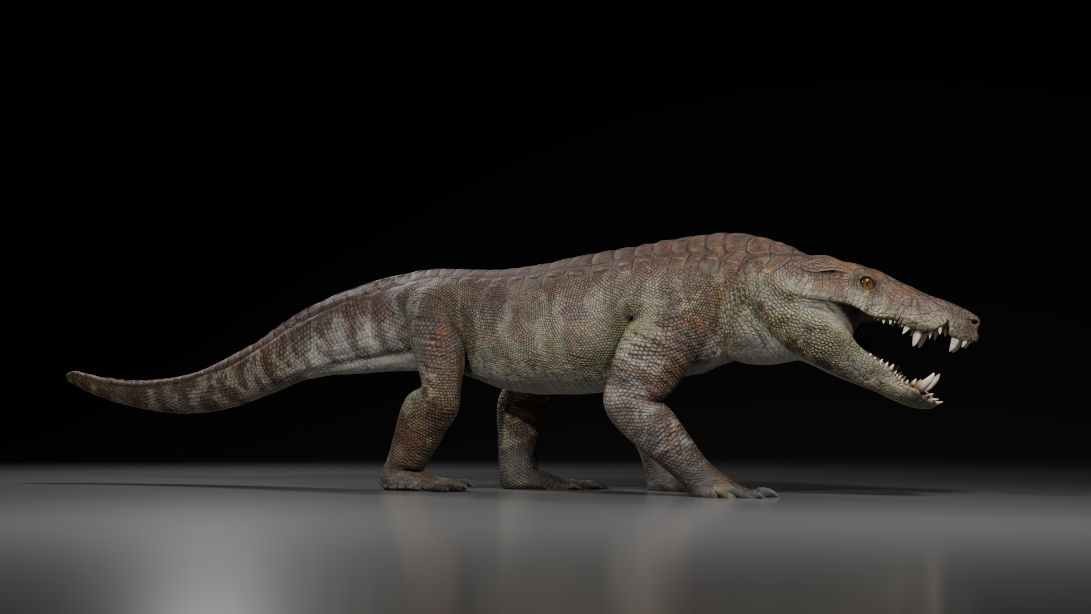A gigantic crocodile-like hypercarnivore likely hunted dinosaurs 70 million years ago in what is now Argentina, a new study reveals.
Researchers discovered the fossilized skeleton from the extinct apex predator in southern Patagonia in 2020. It grew up to around 11.5 feet (3.5 meters) long and weighed about 550 pounds (250 kilograms).
The creature is named Kostensuchus atrox after the Patagonian wind called “the Kosten” and the Egyptian crocodile-headed god Sobek, also known as Suchus. K. atrox was hypercarnivorous, meaning more than 70% of its diet was meat. Equipped with a broad snout, big teeth and robust forelimbs, K. atrox‘s anatomy suggests it was capable of taking down large prey in South America’s Cretaceous (145 million to 66 million years ago) ecosystem, according to a new study published Wednesday (Aug. 27) in the journal PLOS One.
The discovery highlights the fact that dinosaurs lived in the company of a wide diversity of organisms, said study lead author Fernando Novas, a paleontologist at the National Scientific and Technical Research Council (CONICET) and the Félix de Azara Natural History Foundation in Argentina.
“In particular, terrestrial crocodylians were notably diverse and abundant during Cretaceous times in South America and Africa, including small and large, meat-eating and plant-eating forms, revealing that these continents were ‘land of crocs,'” Novas told Live Science in an email. “These extinct crocodyles competed and preyed upon dinosaurs, and played an important role in the structure of vanished ecosystems.”
Related: Bite marks reveal giant terror birds were potentially prey for another apex predator — humongous caiman
K. atrox was part of a group of reptiles called peirosaurid crocodyliforms, which are extinct relatives of living crocodiles. The newly discovered fossils were so well preserved that K. atrox is one of the best peirosaurid crocodyliform examples ever found, and is the most complete large and broad-snouted member on record, according to the study.
Researchers discovered K. atrox in Patagonia’s Chorrillo rock formation. They also discovered a larger carnivorous dinosaur named Maip macrothorax around the same time, which was unveiled in 2022. M. macrothorax was a megaraptor that stood at around 30 to 33 feet (9 to 10 m) long, CBBC Newsround reported in 2022.
While K. atrox was smaller than M. macrothorax, Novas said it was capable of preying upon small to medium-size dinosaurs, meaning it rivaled the top dinosaur predators in the region.
